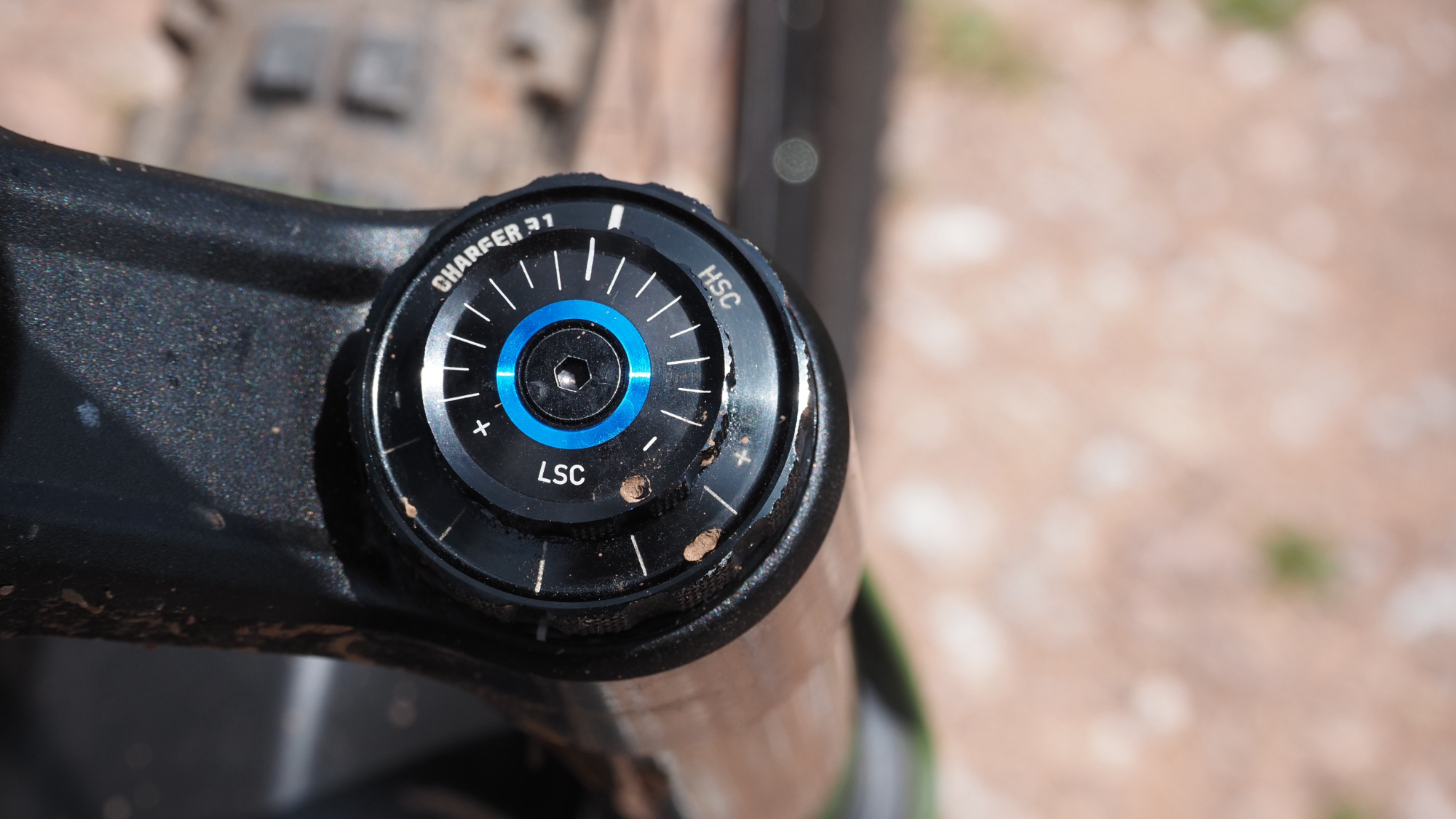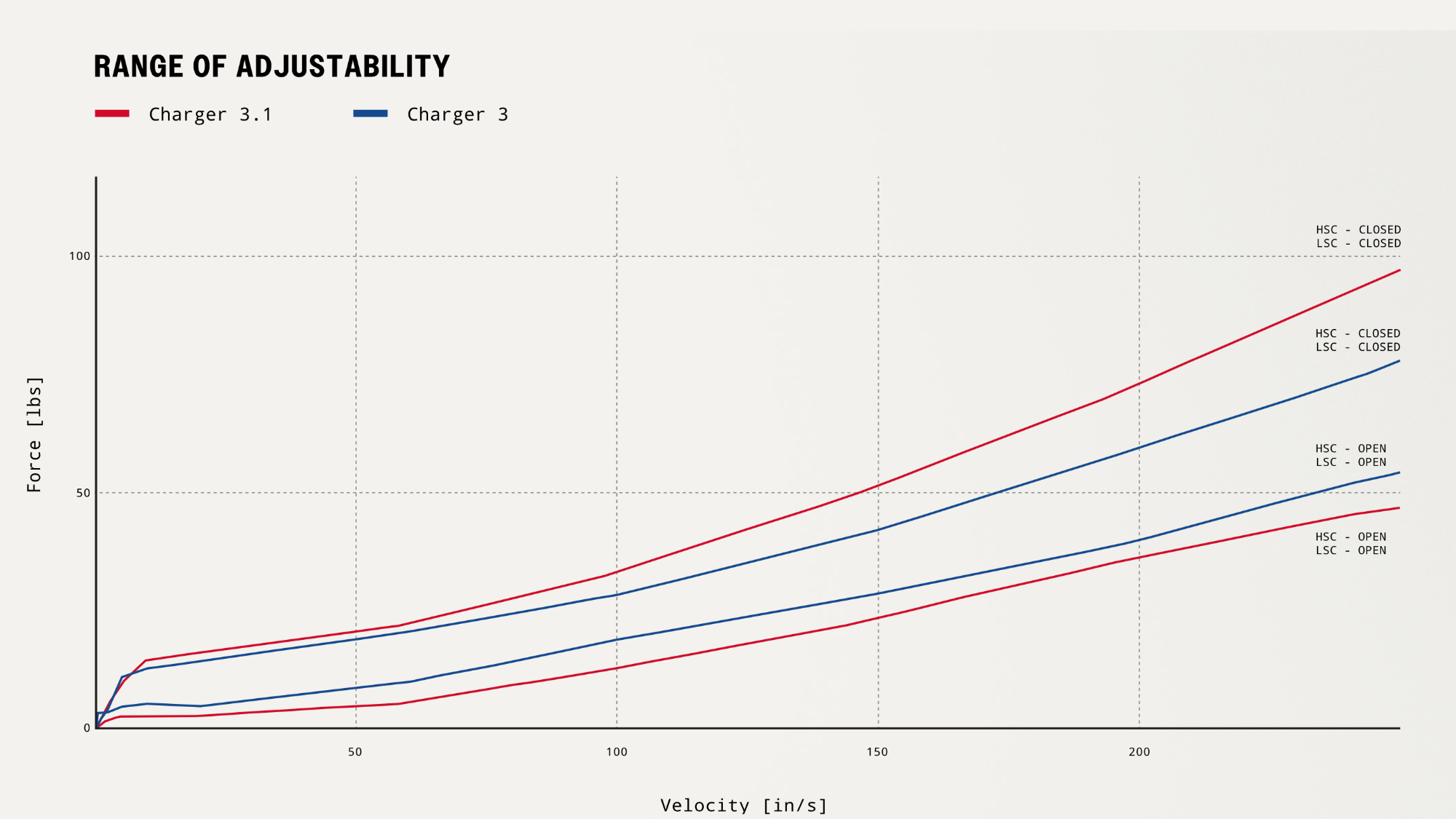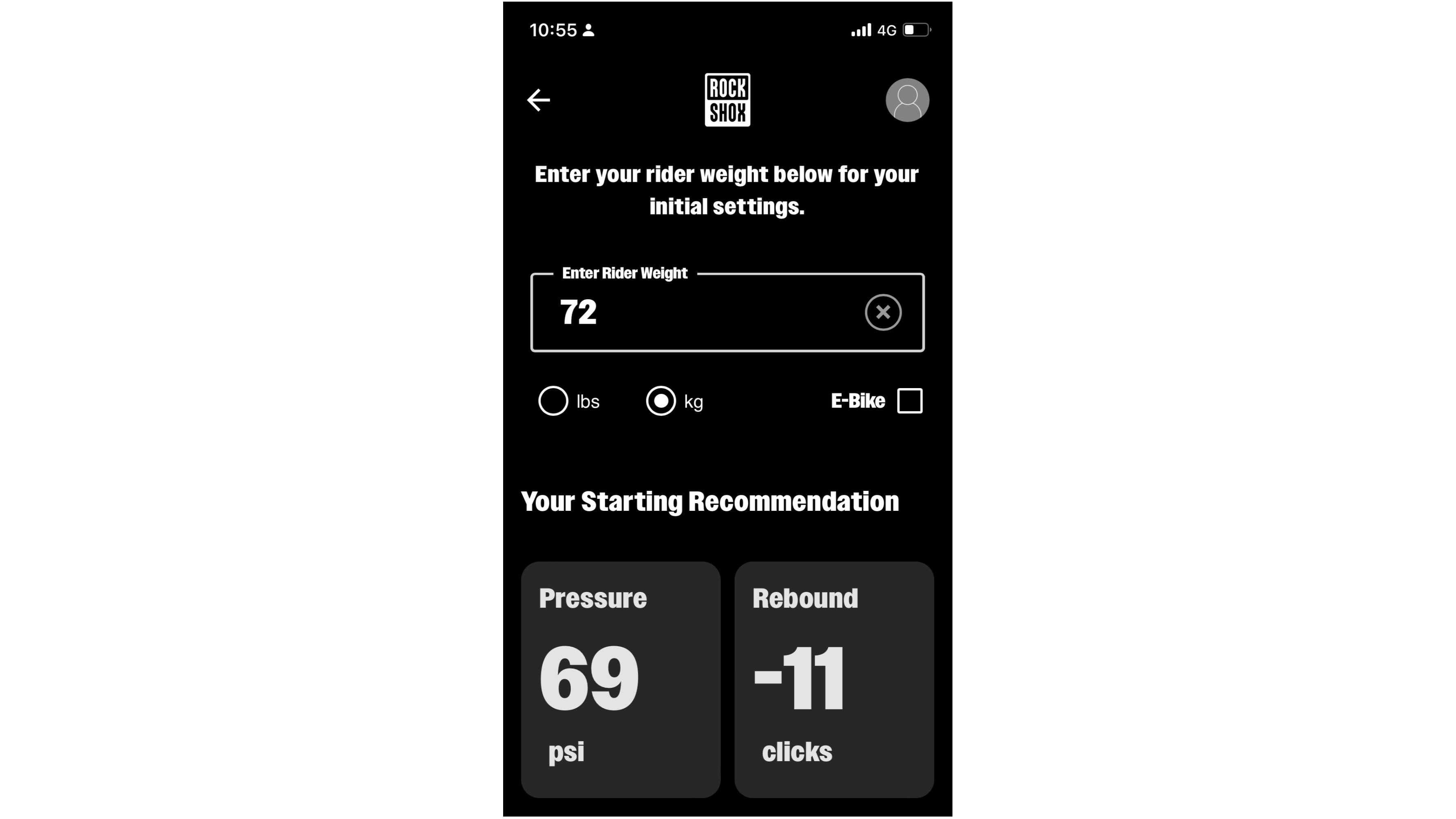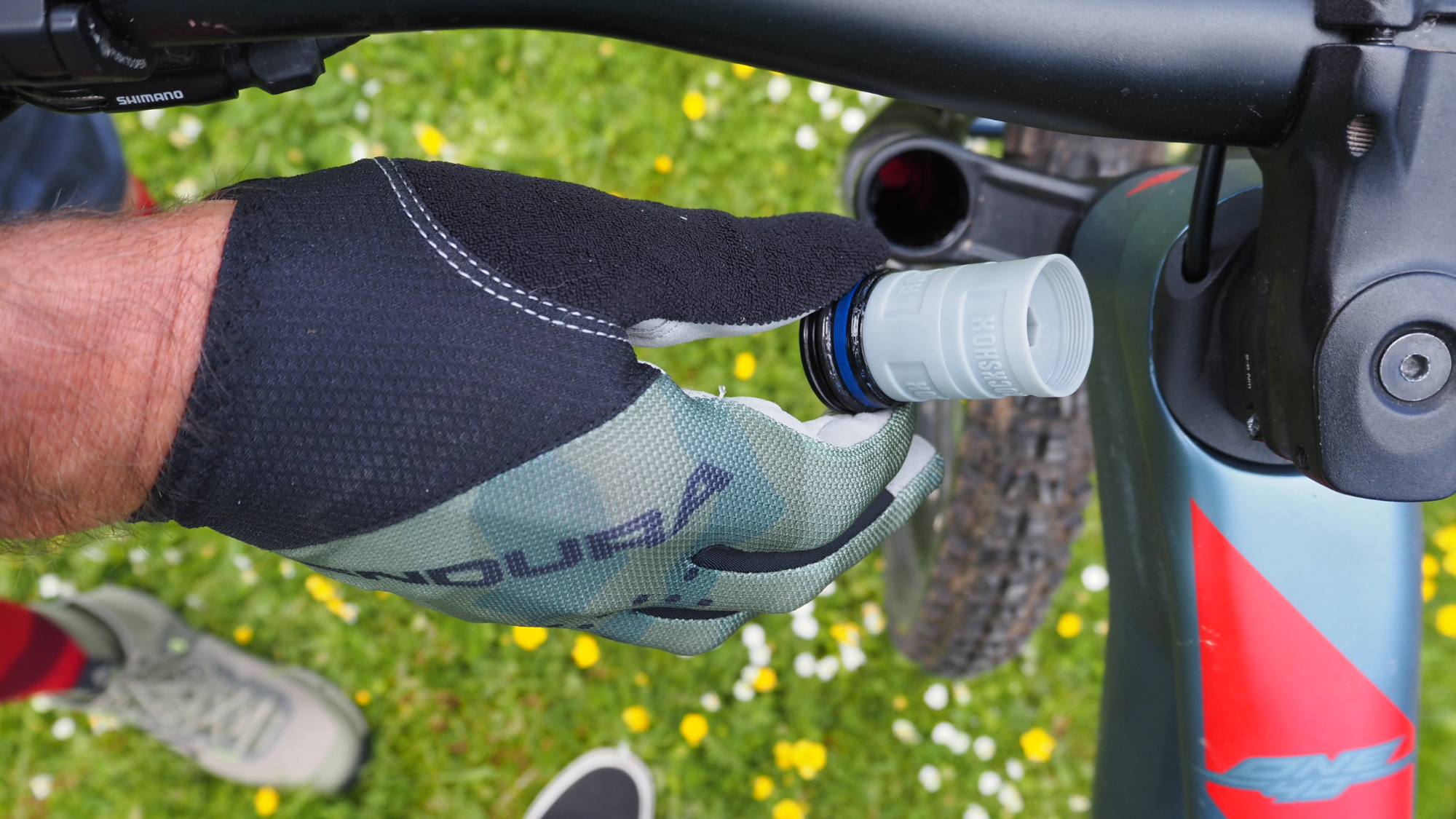
RockShox has upgraded its top and second-tier trail MTB forks (Ultimate and Select+ levels) with a new Charger 3.1 damper that replaces the Charger 3 released two years ago. RockShox' goal with this latest generation of MTB forks and the Charger 3.1 damper is "to reduce harshness that makes it to the rider’s hands, leading to having more control and confidence when riding at higher speeds."
I've been testing a 150mm Lyrik Ultimate to see how it fares. Guy Kesteven gave the previous model 4 out of 5 in his review saying, "superb, silent damping, and well-judged spring rate in a sweetly detailed chassis but micro-spiking issues can make it a handful." So has this latest version improved on last time and is it one of the best mountain bike forks for tough trail riding?

Design and specifications
The 2025 Lyrik Ultimate builds on the previous model with the same chassis, the same 'Heavy Meadow' green paint job, and the short, bolt-on fender. In fact, on the outside, apart from 'Charger 3.1' stamped on top of the damper controls, the fork is identical. Internally though, things have evolved significantly.
New plumbing inside the Charger 3.1 means improved oil flow (up to 68 percent more according to RockShox) when the LSC (low speed compression) dial is in the most open position – which is designed to enhance comfort. At the other end of the scale, there's also the capacity for greater HSC (high speed compression) to create more damping and support.
A graph from RockShock (see below) shows a wider range of compression adjustability provided by the updated 3.1 damper. Despite having the same number of selectable compression clicks on the Charger 3.1 top cap as the last version (4 HSC and 14 LSC), there's now a bigger difference between each click and a wider compression spectrum overall.
Other changes include a new, stiffer IFP (Internal Floating Piston) coil spring in the damper, a redesigned mid-valve check spring, and updated bushings developed from the BoXXer DH fork overhauled last year.
The DebonAir+ air spring and small vibration-absorbing 'ButterCup' rubber pucks within the fork tips also remain unchanged from the previous Lyrik Ultimate.

Like the Charger 3, rather than running the Charger 3.1 damper fully open and adding high and low-speed compression from there, RockShox has designed the midpoint to be the default position so riders can add or remove damping as they see fit. It's not massively intuitive which direction adds or removes damping at first, but turning the high or low-speed compression dials on top of the right hand stanchion clockwise means more compression – anti-clockwise means less.
If you want more tune-ability, additional shim kits are available too. There are two options for tuning the compression damping (Standard and Heavy) and three for the rebound (Light, Medium and Heavy). RRP is $30 / £29 / €32, which includes the required 3.1 High Flow Piston Tool.
If you already own a Charger 3 Lyrik (or any other forks with that damper), 3.1 upgrades are available in the form of a full replacement damper at $358 / £345 / €386, and an upgrade kit for converting your existing damper priced $75 / £72 / €80.
At 2.3kg (including Maxle and star nut, steerer cut to 160mm and without the fender), my 150mm Lyrik Ultimate test sample is slightly (150g or so) heavier than its predecessor. It's also approximately 300g heavier than the latest Fox 36 Factory Grip X fork and the Manitou Mezzer Pro – despite the Lyrik having narrower, 35mm upper tubes.

Performance
Out of the box, with the settings suggested by RockShox's recently revamped TrailHead app, the Lyrik had a luxuriously plush feel, but I was using way more travel than I'd expect on fairly mellow, local singletrack trails. Unlike the previous model, it took quite a bit of fettling and experimentation to tune the setup properly – more on that later.
Over small to medium-sized bumps the 2025 Lyrik is up there with the best I've ridden. It barely missed a beat when silently warp-speeding through lengthy sections of XL potato-sized rocks set in petrified mud. It seemed to soak up every hit and reset itself for the next one micro-seconds later. This helped reduce the forces transmitted to the bars, making it less fatiguing and easier to hold and pick lines rather than pinging between them vaguely piloting the front end in the right direction.
That glued-to-the-ground tracking and resilience to rapid-fire hits gives noticeably more grip through rooty corners too. While some forks would be hammering and skipping their way around, the Lyrik's more limber and lithe trail tracking abilities boosts confidence when traction is at a premium.
Heftier hits dropping to flat were handled really well too. On repeat runs of a section with increasingly large drops, I was going out of my way to land as badly as possible, but the Lyrik set me down without any harsh treatment despite my efforts.
I set up the Lyrik for a heavier test subject to see how he fared. Watching it as he rode, the fork was constantly on the move. At no point did it sit in its travel even on relatively smooth, flatter trails. Stiction didn't seem to be an issue and it was always working – which helps explain why it feels so plush.

Unlike earlier Charger dampers, both the latest Charger 3.1 Lyrik and the 3.0 version come Token-less as standard (you get two in the box). With the Charger 3 era Lyrik, this setup was ideal for my 72kg laden weight and riding style, but with the latest model, I was blowing through the travel far too easily. Winding on more compression helped to a degree, but it took adding a Token and further experimentation with air pressure and compression to find my happy place.
You could say that this normal for a lot of forks out there, but speaking with other Bike Perfect testers, (Guy Kesteven, who has been testing the latest RockShox Pike Ultimate, and Mick Kirkman, who's been testing the new Zeb), it's taken us more time than usual to get our settings sorted for the Charger 3.1 equipped models. Many riders don't have the time or the inclination to get their suspension dialed in as we did, so are less likely to get the full benefit that these forks can offer – a big change from the Charger 3 generation.

Lyrik-to-Lyrik testing
Handily, I was able to do back-to-back testing of the 2025 Lyrik Ultimate versus the previous version on another comparable test bike. The new Lyrik was running on a Merida One-Forty 6000 and the earlier model year on a YT Jeffsy. Both forks were 150mm models with the same settings and both bikes were fitted with Maxxis Minion DHF front tires at 20psi.
Even on fairly standard rocky trails, the difference between the forks was apparent straight away. The new Lyrik was way more sensitive to every lump and bump but operated deeper in its travel as a result. This was more noticeable on lumpy descents, as while the suppleness of the latest Lyrik made rougher sections much easier to ride through, the payoff was using far more travel which noticeably affected the handling as the front end shortened more often and more rapidly (steepening the head angle). The Charger 3 fork tended to sit higher in its travel throughout and felt like it was taking glancing blows from the hits rather than expertly rolling with the punches like the newer model.

Verdict
There's no doubt that RockShox has created an excellent fork in the 2025 Lyrik Ultimate. It's sublimely sensitive, tracks bumps brilliantly, boosts tire grip, and doesn't get overworked when taking on repeated hits. Pricing is slightly lower than the last version too and it's significantly cheaper than Fox rivals.
That super-supple, grip-enhancing ride means you'll be using more travel than previous Lyrik generations though, and the fork operates in its mid-range more often than not – which takes a bit of getting used to. The stroke ramps up nicely when it takes hefty hits though and if there's any harshness when using all of the travel, I've not noticed it.
While the Charger 3.1's wider tuning spectrum allows you to dial into what you want with more precision, it also means there's more room for error. The Lyrik and the rest of the new line-up of forks running next-gen Charger dampers definitely need more setup knowledge and time to get the most out of them. If you're into suspension fettling, that shouldn't be an issue, but there are plenty of riders who are used to being able to bang in the recommended air pressure and wind on a few clicks of rebound to get a pretty good result in a RockShox fork. This latest generation is much more particular though, so be aware you'll need to experiment with air pressure, compression, and Token selection to achieve the results this fork is capable of.
Tech specs: RockShox Lyrik Ultimate 2025
- Price: $1,099 / £1,079 / €1,199
- Discipline: Trail / enduro
- Damper: Charger 3.1 RC2 with ButterCups
- Air spring: DebonAir+
- Upper tube diameter: 35mm
- Wheel sizes: 27.5-inch, 29-inch
- Travel: 140mm, 150mm, 160mm
- Offset: 37mm (27.5”), 44mm (27.5”, 29”)
- Axle: 15mm x 110 Boost
- E-bike approved: Yes
- Maximum tire clearance: 2.8in
- Maximum bike and rider weight: 169kg / 373lbs
- Rotor size: 180mm to 220mm
- Color: Heavy Meadow Green
- Model tested: 29-inch, 150mm travel, 44mm offset
- Weight: 2.3kg (with Maxle, star nut, and steerer cut to 160mm, no fender)







